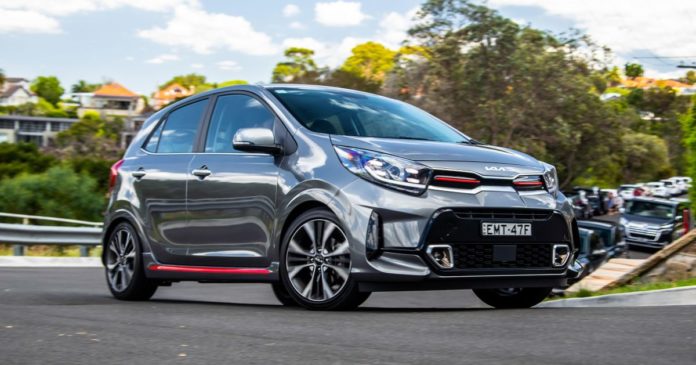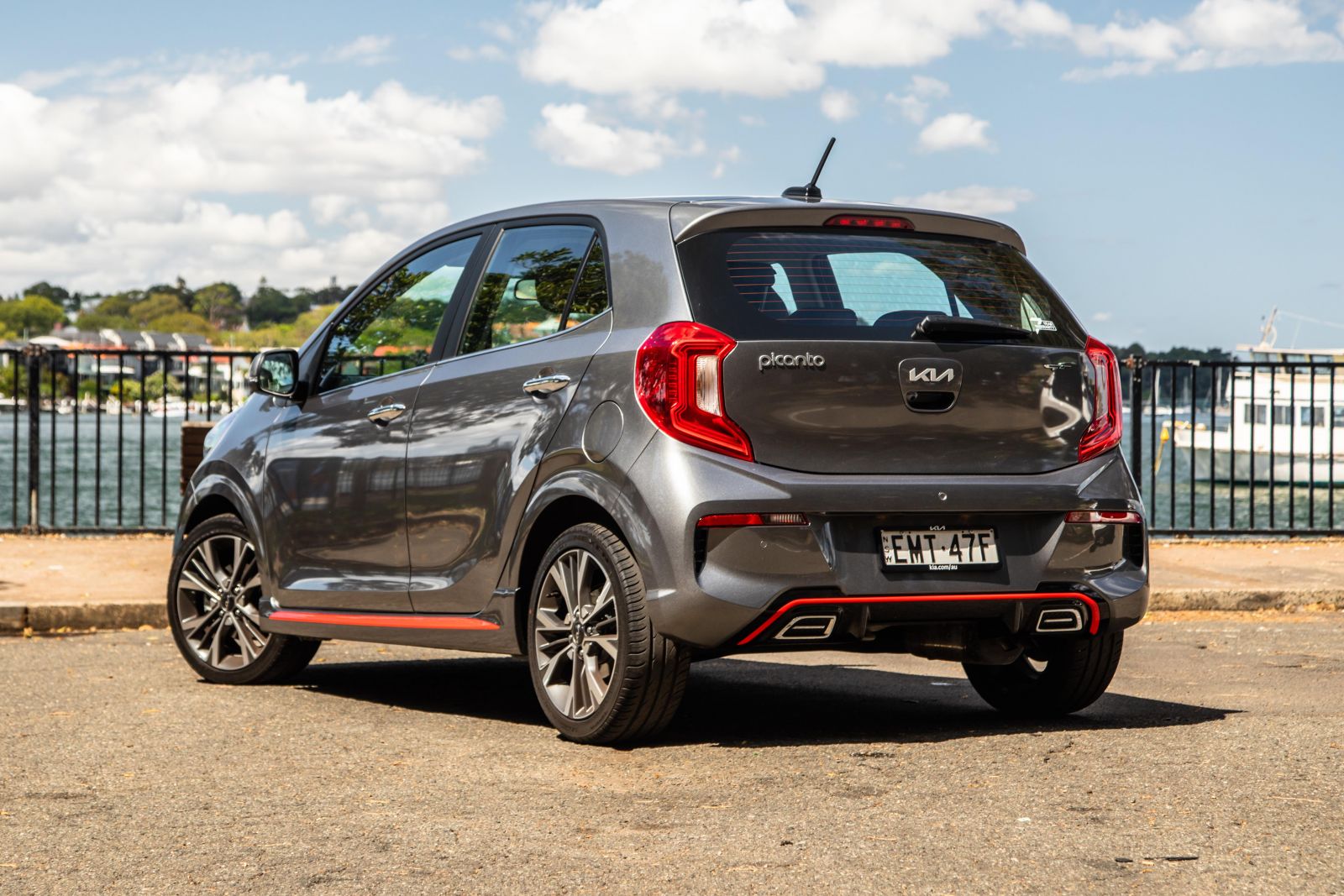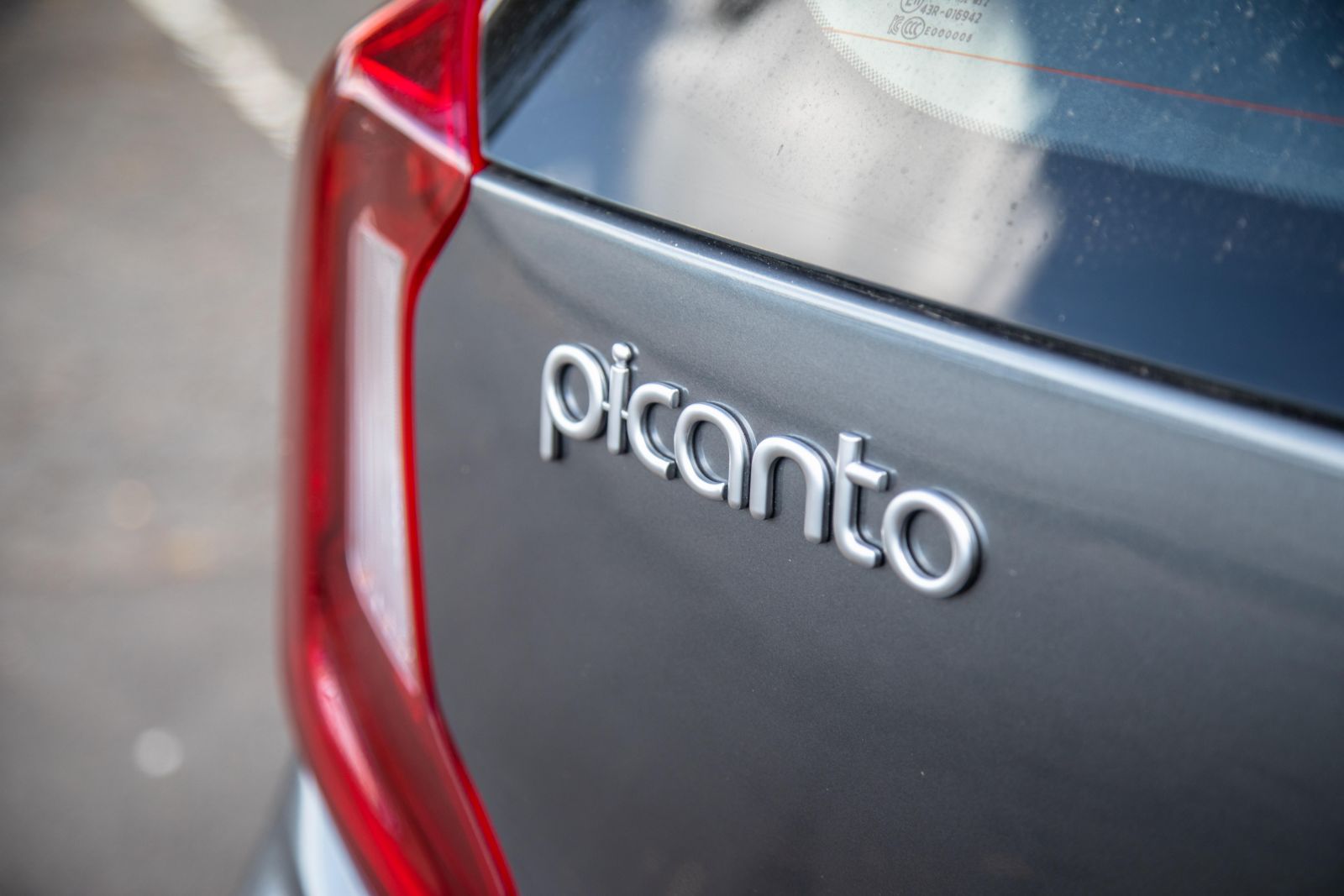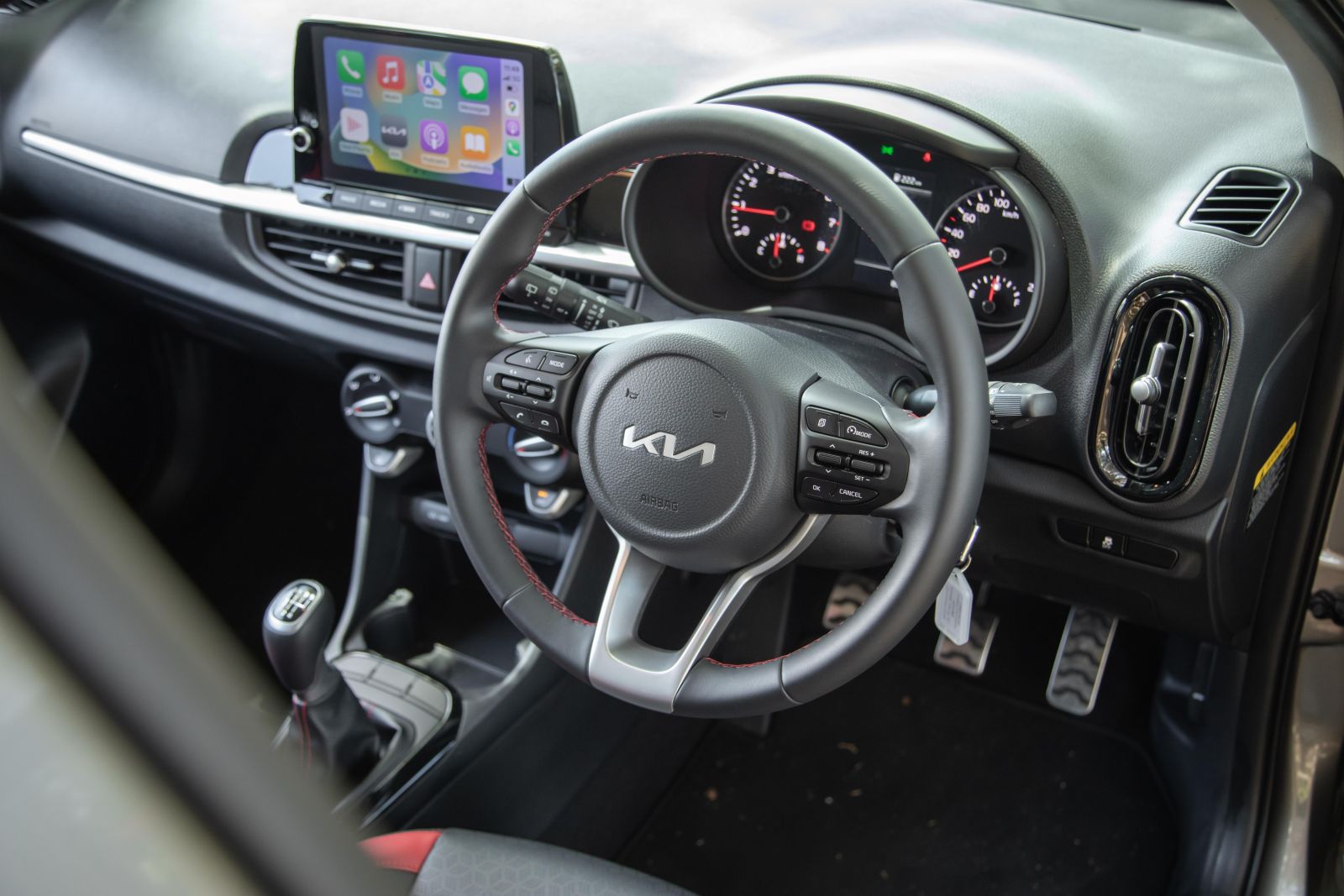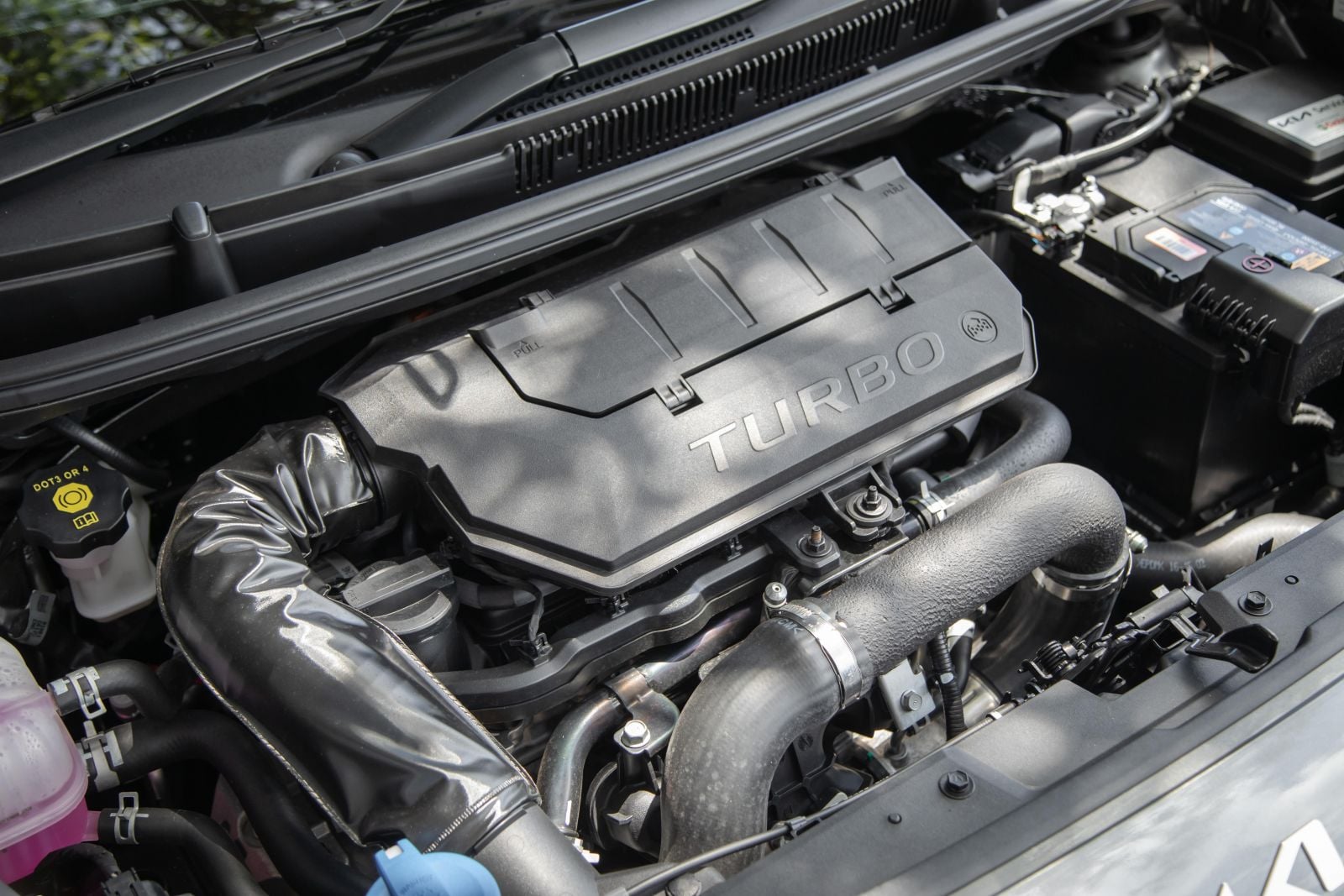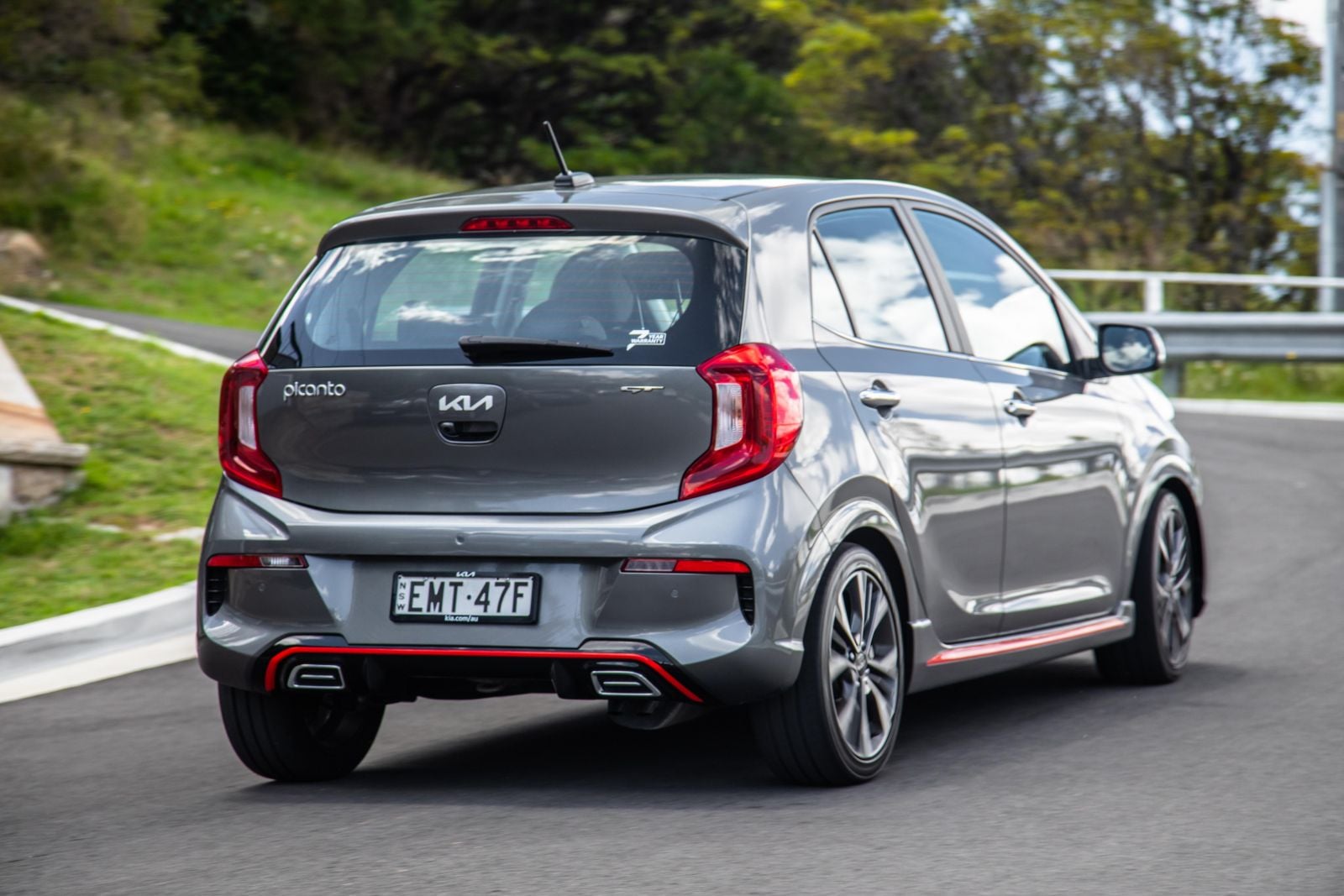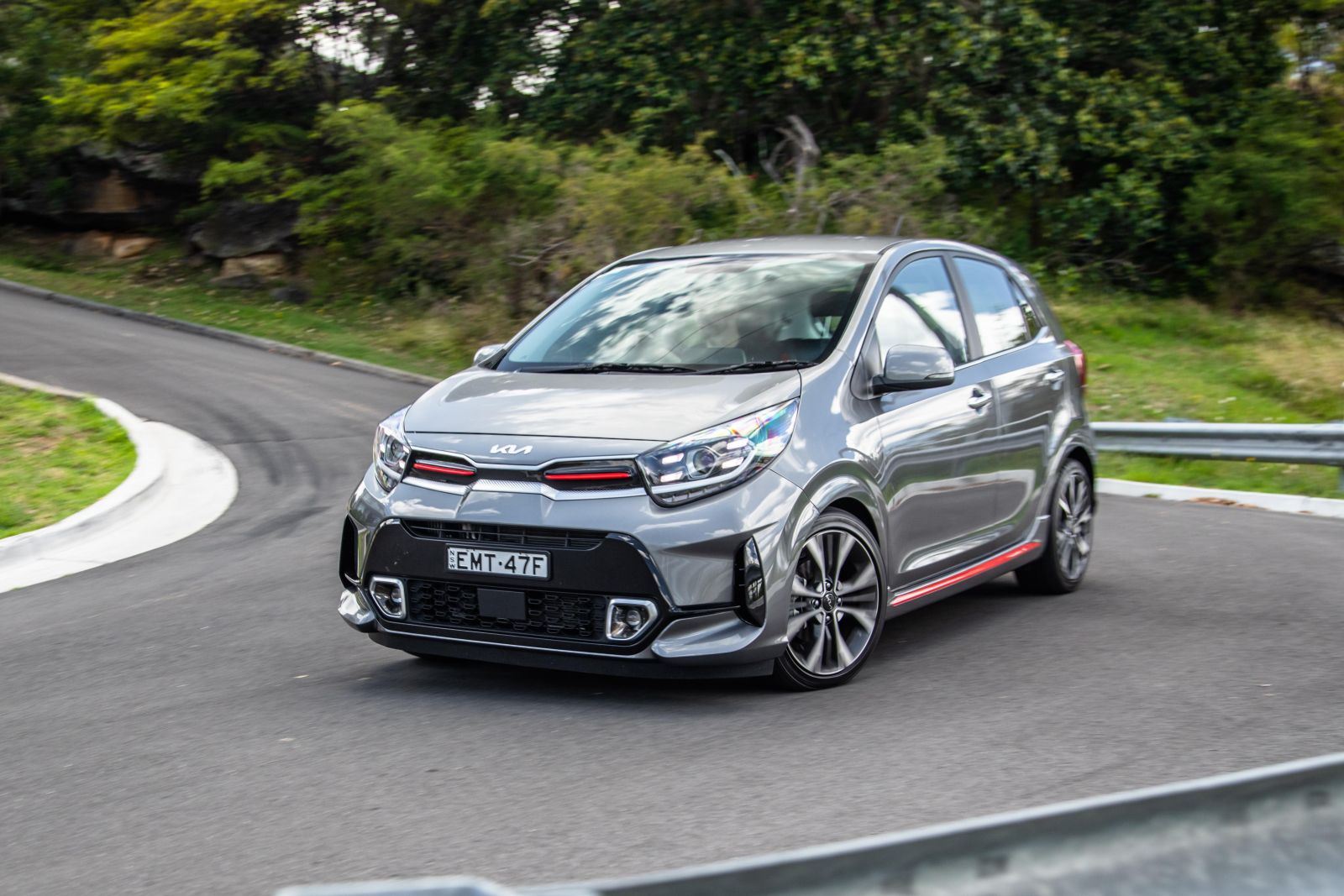If you want a cheap little car with a long warranty and at least a little bit of active safety technology, the Kia Picanto is literally your only choice.
That’s because its main rivals – the almost-ready-to-be-replaced Fiat 500 and the massively popular MG 3 – don’t have any form of autonomous emergency braking (AEB) to speak of – and if having a safety backstop that could save your car, or someone else’s car, and keep your insurance premium low; then that could matter to you.
But there’s more to the Kia Picanto than just being little, slightly safer than its rivals and affordable. Especially if you are looking at the one tested here, the range-topping GT version.
It’s turbocharged, properly fun, and definitely subscribes to the “good things in small packages” mantra.
How much does the Kia Picanto GT cost?
This is the range-topping Picanto, but still comes at a pretty damn cheap price point.
The list price for the 2023 Kia Picanto GT is $20,790 plus on-road costs, but Kia has drive-away pricing listed at $22,890 for the 2000 postcode. You can check your drive-away price on Kia’s online configurator.
That makes the manual-only GT version a bit of an odd bod in the market – there is nothing else at this end of the market that’s performance-oriented, and it’s on its lonesome when it comes to being offered with three pedals only.
Looking at spending around $20,000 for a brand new car? The pickings, my friend, are slim. You could look at an MG 3, or a base Kia Rio if interior space is a priority. Or, if you can push the dollars a bit further and want something European, the Fiat 500 is still for sale.
But if your budget is stricter than that, there are other options in the Picanto range. The S grade is the cheapie, with the five-speed manual priced from $16,290, and the four-speed auto at $17,890.
Choose the sporty-looking-but-not-sporty-to-drive GT-Line and you’ll pay just a wee bit more – the five-speed manual is $17,740 and the four-speed auto is $19,340. Prices exclude on-road costs.
2023 Kia Picanto pricing:
- Kia Picanto S 5MT: $16,290
- Kia Picanto S 4AT: $17,890
- Kia Picanto GT-Line 5MT: $17,740
- Kia Picanto GT-Line 4ATL $19,340
- Kia Picanto GT 5MT: $20,790
Prices exclude on-road costs
What is the Kia Picanto GT like on the inside?
It’s built to a price and certainly feels ‘affordable’ inside. And if you equate the cost of this car with, say, the real estate market – you aren’t getting a whole lot of space for your spend.
On that, the interior is tight. Like, you shouldn’t expect much else when you’re buying a car that is less than 3.6 metres in length, but it is pretty small in the cabin in a few important ways.
You will bump shoulders with your passenger at times, especially if you both slump into the car at the same time. And if you’re not romantically involved with whoever is riding shotgun, you might want to make sure they’re okay with you occasionally touching their leg when you shift gears.
Despite that there is still some storage on offer between the front seats, including open cup holders and storage slots, including adaptable cupholders in front of the shifter and a nice open cubby with a shelf for your phone.
There is a sliding centre armrest, which is nice for a car of this size (you don’t get one in the base model). The door pockets are large enough to fit a bottle and some other junk, and the glovebox is actually generous for the size of the car.
Front seat occupants have a decent amount of space, and the driver’s seat offers good adjustment for people of different ages and body types. I’m 182cm and I could get comfy, and so could my 150cm mum.
The steering wheel has tilt adjustment (no reach adjustment) the seatbelts are height-adjustable, the seat has height and slide adjustment. There’s no adjustable lumbar support, but I didn’t need it after several hours of highway driving.
The rear seat is a bare bones affair. There is a map pocket. That is it. No bottle holders, cup holders, vents, charging options… just a map pocket. And only one of them, too, on the back of the passenger seat.
As for space, there’s only just enough for me to slot in behind my own driving position. My knees were hard up against the seat ahead, but I had okay toe room and headroom once in the spot.
Three across won’t be an option for most people, but there are three seatbelts in the back so if you have a single back-seat rider, they can choose wherever suits them best.
If you’re a parent you’ll be encouraged to learn there are ISOFIX attachment points for the window seats, and a trio of top-tether hooks on the very tops of the seatbacks, as well. That is clever design, because it means you won’t have unnecessary pressure on the straps of your child seat, and nor will said straps be eating into the boot space.
Now, the boot isn’t winning any prizes for spaciousness. It has 255 litres of cargo capacity, and it’s a bit of an awkward space because there’s a steep ‘cliff’ loading lip that means I couldn’t even fit my pram in without having to take the wheels off.
Speaking of wheels, there’s a space-saver spare under the boot floor. Yep, somehow they managed to fit that in there.
What’s under the bonnet?
The Picanto GT is the most powerful variant, yet gets an engine that has a smaller capacity and fewer cylinders than other models.
That’s because it scores a 1.0-litre three-cylinder turbo petrol engine, which is good for a huge 74kW (4500rpm) and 172Nm (1500-4000rpm).
Okay, huge is a bit of a stretch; but the additional 12kW and 50Nm makes a massive difference, considering the Picanto is so slight – the GT is just 1012kg, the GT-Line auto is 1011kg, and the GT-Line manual is 993kg.
As mentioned, if you want an automatic and a turbo engine, you’re out of luck. The GT is a five-speed manual offering only, and it’s front-wheel drive.
How does the Kia Picanto GT drive?
My mum, dad and partner all drove this car. In that order, here’s what their reactions were: “That is a little groover!”; “What a fun little car!”; and “I think I want one of those!”.
None of them are car reviewers, though. So here’s what I thought: the Kia Picanto GT is a groovy, fun little car, and I think I want one. Oh wait…
Anyway, I think anyone who gets behind the wheel of this car will feel the same way we all did. It is a heap of fun, a bit old-school in the way it drives.
The little three-pot rasper has a great character to it – it has a bit of lag low in the rev range and needs a fair bit of right-foot to get it moving, but it is more rapid than you might expect it will be.
The five-speed manual has a pretty long throw to the shift, and the gears are tall too, meaning you might find you’re in third when you could be in fifth.
Some may find the shift action and the fact you feel like you’ve gotta work the drivetrain hard a bit unsophisticated, but the enthusiasts out there will like the charm of it.
As well as having more grunt, the GT model has sportier suspension and steering than the GT-Line, and it handles better than any other Picanto as a result.
Sure, it’s not the last word in comfort or control – hitting a mid-corner bump can really upset the chassis, and the ride is jarring and bouncy at times – but it is certainly the most eager car at this price point.
And, while I spent most of my time in the car commuting on the motorway, I did give it a punt at every chance.
It is noisy, though. Coarse-chip road surfaces (of which there are plenty in Australia) will throw a lot of road roar into the cabin, and given the GT-Line models run the same type of wheel-tyre combo, you can bet they’ll be loud inside too.
But if you don’t spend all that much time on highways, and you really want a car that’s the essence of ‘zippy’, this is it.
What do you get?
Okay, so you’re going to get the most out of your Picanto if you spend more – but here’s a rundown of the standard equipment across all the different grades.
Picanto S highlights:
- 8.0-inch touchscreen infotainment system
- Wireless Apple CarPlay, Android Auto
- 4.2-inch instrument cluster display screen
- Automatic headlights
- Cruise control
- Power windows
- Remote central locking
- Air-conditioning
- 14-inch steel wheels
Picanto GT-Line adds:
- GT-Line exterior package
- Contrast body accents
- Dual exhaust trims
- Body kit
- 16-inch alloy wheels
- Electric folding mirrors with indicators
- LED daytime running lights
- Alloy sports pedals
- ‘Premium’ seats with red accents
- Leatherette-wrapped shifter and steering wheel
- Sliding, soft-touch front centre armrest
Picanto GT (as tested) adds:
- 1.0L 3cyl turbo engine
- Sport-tuned suspension and steering
Is the Kia Picanto GT safe?
If having some form of autonomous emergency braking as standard in your new small car is important to you, then the Picanto is going to be your go-to car, because it has AEB and forward collision warning as standard on all versions.
But, while some newer cars have an array of functionality from their AEB systems, the Picanto can only do car-to-car crash avoidance. There is no pedestrian or cyclist detection, nor junction assist.
However, if you ask me, having that tech is better than not having it. It’s just a shame that the Picanto still only managed a four-star ANCAP safety rating back in 2017, and things have only gotten stricter since then.
It lacks any other smart safety tech – there’s no lane keeping assistance, blind-spot monitoring, rear cross-traffic alert or rear AEB. But you do get a reversing camera, rear parking sensors, and six airbags (dual front, front side and full-length curtain airbags) for occupant protection.
It’s worth noting the MG 3 and Fiat 500 both lack any active safety tech. The MG doesn’t have a current ANCAP score (the pre-facelift version scored just three stars in Euro NCAP in 2014), and the Fiat’s score (five stars – from 2008!) just expired.
How much does the Kia Picanto GT cost to run?
Kia built a name for itself by being first in the market to offer a seven-year, unlimited-kilometre warranty for private buyers, and the brand continues to offer that level of cover for new customers.
There’s also seven years of roadside assistance, and a capped-price servicing plan for up to seven services.
Now, that’s an important stipulation. It could be seven years of ownership for you, depending on how many kilometres you drive.
But the brand requires maintenance every 12 months or 15,000km (whichever occurs first) for the non-turbo models, and every 12 months or 10,000km (whichever comes first) for the turbo. So if you do a lot of kays, the turbo will run out of its capped-price plan sooner.
Keep this in mind too – the servicing is quite expensive for a small, cheap car. Non-turbo versions average out at $407 per service over that plan, while the turbocharged GT is closer to $450 a visit on average; and you might need to budget to spend more if you do a lot of driving.
When it comes to keeping fuel up to it, it’s another “depends which one you buy” calculation. The non-turbo manual uses a claimed 5.0 litres per 100 kilometres on the combined fuel cycle, while the non-turbo auto is said to use 5.8L/100km. So a pretty decent amount more.
The turbo model claims 5.2L/100km, and during my testing – which covered more than 700km – I averaged just 5.1L/100km. Yep, I beat the claim, and I thrashed it on occasion, too.
CarExpert’s Take on the Kia Picanto GT
There’s no doubt in my mind that the Kia Picanto is a great little runaround car, and the GT makes those errands more fun than they otherwise would be.
The current buy-in price is getting up there considering it used to be a whole lot more affordable, and the servicing really ought to be cheaper.
But for those who need a tiny little car at a relatively tiny price, it’s a terrific choice.
Click the images for the full gallery
MORE: Everything Kia Picanto

